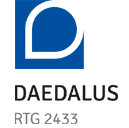
- This event has passed.
Talk by Prof. Dr. Alexandre Tkatchenko (University of Luxembourg) on ‘Machine Learning Force Fields’
November 30, 2021 at 4:00 pm
Abstract:
Machine Learning Force Fields (MLFF) should be accurate, efficient, and applicable to molecules, materials, and interfaces thereof. The first step toward ensuring broad applicability and reliability of MLFFs requires a robust conceptual understanding of how to map interacting electrons to interacting “atoms”. Here I discuss two aspects: (1) how electronic interactions are mapped to atoms with a critique of the “electronic nearsightedness” principle, and (2) our developments of symmetry-adapted gradient-domain machine learning (sGDML) framework for MLFFs generally applicable for modeling of molecules, materials, and their interfaces. I highlight the key importance of bridging fundamental physical priors and conservation laws with the flexibility of non-linear ML regressors to achieve the challenging goal of constructing chemically-accurate force fields for a broad set of systems. Applications of sGDML will be presented for small and large (bio/DNA) molecules, pristine and realistic solids, and interfaces between molecules and 2D materials.
[Refs] Sci. Adv. 3, e1603015 (2017); Nat. Commun. 9, 3887 (2018); Comp. Phys. Comm. 240, 38 (2019); J. Chem. Phys. 150, 114102 (2019); Sci. Adv. 5, eaax0024 (2019).
